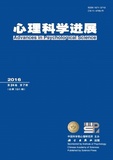Due to the characteristics of internal fertilization, human fertilization, to a certain extent, is concealed. Meanwhile, adultery existed in early human society. Therefore, males suffer from the uncertainty that their putative children may not be their biological offspring, which is paternal uncertainty. To cope with this uncertainty, males are unconsciously looking for cues that might indicate a genetic similarity between them and their offspring. Among these cues, the facial resemblance is one of the indirect ways that males could infer if there is a biological connection in terms of fatherhood. Three methods are there to measure facial resemblance, including morph software synthesis, third-party rating, and self-rating. Previous studies have shown that the more similar the facial characteristics between a father and his offspring are, the more paternal resources the father would be willing to invest during parenthood. The less anxious and healthier a father is during parenthood, the higher sexual aversion a father would experience in the relationship with their children. The present research suggested three directions for future studies. First, it is valuable to look at the cultural differences in the impacts of father-child facial resemblance. Second, in order to enhance its internal and external validity, future work can adopt new methods to assess the father-child facial resemblance. Last, it would be an exciting direction to explore the relationship between the subjective assessments and the objective assessments of father-child facial resemblance.




